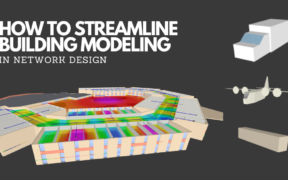Category: Private Networks

In the ever-evolving landscape of technology, predicting network coverage in future buildings is a crucial aspect that demands attention. The ability to anticipate how well a network will perform within a structure is paramount for providing optimal connectivity and ensuring a seamless user experience. In this blog post, we’ll delve into the why, the key […]

Smart cities are rapidly becoming a reality, with many municipalities across the world investing in digital infrastructure to increase efficiency and improve citizen experiences. To reach their fullest potential, smart cities must leverage private wireless networks to provide high-speed data connectivity between critical applications. Understanding the Need for Private Wireless Networks in Smart Cities Smart […]

In the realm of wireless network design, where time is often of the essence, building modeling emerges as one of the most time-consuming aspects of the process. This blog post is dedicated to unraveling the critical role of building modeling, emphasizing the imperative for increased speed, simplicity, and precision. We’ll also delve into the challenges […]
